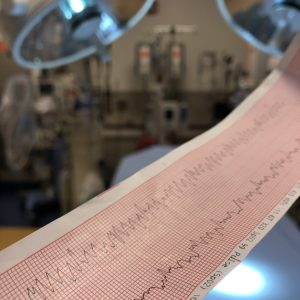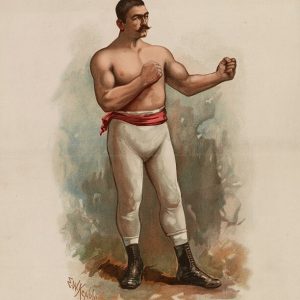Want to experience the greatest in board studying? Check out our interactive question bank podcast- the FIRST of its kind here: emrapidbombs.supercast.com
Authors: Travis Smith, DO
Peer Reviewer: Blake Briggs, MD
Objectives: define ST-elevation myocardial infarction, review the pathology, diagnosis, treatment, and management.
Introduction: Myocardial Infarction (MI) can present as an ST-segment elevation myocardial infarction (STEMI) or non-ST segment myocardial infarction (NSTEMI). Providers should be highly suspicious of ACS in patients presenting with chest discomfort and dyspnea as over 200,000 cases of STEMI are reported annually. This article will focus on the treatment of patients with STEMI in the ED. Please see our article on NSTEMI for more discussion on those patients.
Prompt recognition- beneficial effects of therapy are greatest when performed soon after presentation.
Goals of immediate care in ED of STEMI patients:
– relief of pain
Accelerate your learning with our EM Question Bank Podcast
- Rapid learning
- Interactive questions and answers
- new episodes every week
- Become a valuable supporter
– assess hemodynamic status
– initiate reperfusion therapy (PCI vs fibrinolytics)
– give antithrombotic therapy
Management: Initial pharmacologic management in the emergency department can vary by institution so we recommend consulting with your interventional cardiologist to get on board with their initial treatment regimen. However, it is good to become familiar with all the different possible treatments.
Oxygen: No longer recommended if O2 saturation is >90% as some studies showed harm with larger infarcts and dysrhythmias.
Beta-Blockers: not typically given in ED but need to be started within 24 hours.
Morphine: Can be used for pain. Its controversial if morphine increases mortality in STEMI patients. The CRUSADE trial showed higher mortality in those receiving it. We know its definitely harmful in those with CHF exacerbation presentations. We prefer fentanyl at our shop.
Anti-platelets:
Aspirin alone has the greatest benefit. It takes effect <60 min. Give non-enteric coated 325 mg prior to PCI.
P2Y12 inhibitors (clopidogrel, prasugrel, or ticagrelor): These bind ADP receptors and are recommended prior to PCI based on 2013 ACCF/AHA guidelines. All 3 of them are class 1 level B recommendations. However, drug selection is highly institution specific so get on board with your PCI team and what they prefer.
Nitrates: Studies have not found that giving them reduces infarct wall size. They are given either sublingually (0.4 mg SL) or IV drip depending on severity of symptoms and elevation of BP. Rarely do STEMI patients have hypertensive emergency, so we rarely if ever advise starting nitroglycerin drips. Their main goal is to reduce afterload and dilate the coronary tree. Be cautious in those with inferior wall & right sided MI, as up to 20% of these patients can have RV infarction and may become hypotensive after nitroglycerin administration. You should also not give nitrates in those with hypotension, or history of severe aortic stenosis.
Statin: High dose atorvastatin or rosuvastatin.
Anticoagulation: enoxaparin, heparin, or bivalirudin: (cardiologist dependent)
Heparin: 70-100 u/kg IV bolus without GP IIb/IIIa or 50-70 u/kg IV bolus w/ GP IIb/IIIa.
Enoxaparin: 30 mg IV bolus followed by 1mg/kg SQ 15 min later q 12hr if <75. No IV bolus & 0.75 mg/kg SQ if >7.
Bivalirudin: a direct thrombin inhibitor that has shown superiority over heparin along with reduced bleeding complications, but resulted in higher rates of ischemic events, including acute stent thrombosis in ST segment elevation myocardial infarction (STEMI) patients. Prior to PCI, give 0.75 mg/kg IV bolus, infusion at 1.75 mg/kg/hr.
Most commonly, a patient presenting with a STEMI will get full dose ASA, heparin bolus, nitroglycerin, and morphine/fentanyl if still in pain. The use of other antiplatelets or anticoagulation is left at the will of the interventionalist.
*Never give glucocorticoids or NSAIDS as they impair the healing and increase the risk of ventricular rupture.
The mainstay of treatment for STEMIs are reperfusion therapies such a percutaneous coronary intervention (PCI) or thrombolytics. PCI has been shown by solid studies to have enhanced survival and a lower rate of intracranial hemorrhage compared to fibrinolytics. There is also a lower rate of recurrent MI.
Decision for PCI: any patient should undergo immediate PCI if available on site. Ideal door-to-balloon time is <90 minutes.
For any patient presenting at an ED with no available on-site PCI, the situation changes, and you must know this for the test and clinical practice.
-Rapid transfer to PCI if able to do so in <90 minutes. No fibrinolytics are indicated.
-If presenting within <2 hours of onset of symptoms and unable to transfer in <90 minutes to a PCI center, give full-dose fibrinolytic therapy and transfer to a PCI-capable center.
-If presenting >2 hours, transfer for primary PCI if able to do so in <120 minutes. If not, fibrinolytics may be appropriate up to 12 hours. PCI can then be performed within 24 hours but no sooner than 3 hrs.
If fibrinolysis fails, rescue PCI is more effective than repeat fibrinolysis. Remember that thrombolytics can cause a strange rhythm called “fibrinolytic reperfusion dysrhythmia”: AIVR. Looks like ventricular escape but rate is >50. No treatment needed. In fact, antidysrhythmic therapy can cause hemodynamic collapse.
Special Circumstances: In out of hospital cardiac arrest, patients with sustained return of spontaneous circulation (ROSC) and STEMI or new LBBB on ECG have been found to have a higher rate of CAD, 70% to 90%, with acute coronary lesions in up to 80% cases. Thus, current guidelines recommend early catheterization/reperfusion as they have a 2-fold to 3-fold higher functionally favorable survival rate over patients who did not have get immediate PCI.
Cardiogenic shock
Rarely, in 5-10% of cases, patients can present in shock. MI is most common etiology of cardiogenic shock and is the leading cause of death, with hospital mortality approaching 50%.
Expect these patients to have a low cardiac index, elevated filling pressures of the left, right, or both ventricles, and a decreased mixed venous oxygen saturation. Most patients will be hypotensive, due to a low cardiac index and poor stroke volume. The LV is the most commonly affected area to cause severe dysfunction (80% of all cardiogenic shock causes). Other causes include acute mitral regurgitation, interventricular septal rupture, and cardiac tamponade.
Most patients who develop shock do so after hospital admission, and not in the ED. However, if patients delay hospital presentation, they may arrive hours-days after their initial MI and be in frank shock. In one study, 50% of patients diagnosed with cardiogenic shock did so within 24 hours after infarct.
On presentation these patients can present with evidence of systemic hypoperfusion, including hypotension, tachycardia, oliguria, altered mental status, and clammy/pale skin.
Volume overload is not an expected finding as the onset is rapid. Rather, look for dyspnea, hypoxia, rales/wheezing. However, pulmonary congestion is an uncommon finding, only seen in <30% of patients.
In the ED, diagnosis is suspected by clinical presentation and history. Nothing should delay resuscitation. Bedside POCUS may show globally decreased left and/or right systolic dysfunction.
Management
Coronary angiography should be performed in all patients when acute MI is suspected, with PCI of any culprit lesions.
In patients who are at facilities without PCI, immediate transfer should be performed without delay. If any long delays in transport are present and the risks of fibrinolysis are low and the duration of MI symptoms is less than 3 hours, fibrinolytic therapy prior to transfer may be performed.
Hemodynamic support is complex. Assess the patient’s volume status which may be challenging. Go slow with IV fluids and only do doses of 250-500 mL, as many patients may not tolerate volume expansion.
Your first vasopressor choice should be norepinephrine, as it has a lower rate of arrhythmias and a trend toward lower mortality. You should minimize the number and doses of inotropic and vasopressor agents.
Initial dose of norepinephrine (0.05 mcg/kg/minute) with a maintenance dose range of 0.4 mcg/kg/minute.
Despite the historical use of dopamine, it appears some evidence suggests that norepinephrine has better outcomes (e.g. less arrhythmias).
Dobutamine, a pure inotrope, may be used in patients who have a tolerable blood pressure but low cardiac index.
References
1. Yusuf S, Hawken S, Ounpuu S, et al. Effect of potentially modifiable risk factors associated with myocardial infarction in 52 countries (the INTERHEART study): case-control study. Lancet 2004; 364:937.
2. Ward MJ, Kripalani S, Zhu Y, et al. Incidence of emergency department visits for ST-elevation myocardial infarction in a recent six-year period in the United States. Am J Cardiol. 2015;115(2):167-170. (Cross-sectional analysis of database; 1.5 million ED visits)
3. Glickman SW, Shofer FS, Wu MC, et al. Development and validation of a prioritization rule for obtaining an immediate 12-lead electrocardiogram in the emergency department to identify ST-elevation myocardial infarction. Am Heart J 2012; 163:372.
4. Goldman, Lee, et al. Goldman-Cecil Medicine. 25th ed., vol. 1, Elsevier Saunders, 2020.
5. Go AS, Barron HV, Rundle AC, et al. Bundle-branch block and in-hospital mortality in acute myocardial infarction. National Registry of Myocardial Infarction 2 Investigators. Ann Intern Med 1998; 129:690.
6. Fanaroff AC, Rymer JA, Goldstein SA, et al. Does This Patient With Chest Pain Have Acute Coronary Syndrome?: The Rational Clinical Examination Systematic Review. JAMA 2015; 314:1955.
7. Reddy KS, Satija A. The Framingham Heart Study: impact on the prevention and control of cardiovascular diseases in India. Prog Cardiovasc Dis 2010; 53:21.
8. Lemkes JS, Janssens GN, van der Hoeven NW, et al. Timing of revascularization in patients with transient ST-segment elevation myocardial infarction: a randomized clinical trial. Eur Heart J 2019; 40:283.
9. Dai X, Bumgarner J, Spangler A, et al. Acute ST-elevation myocardial infarction in patients hospitalized for noncardiac conditions. J Am Heart Assoc 2013; 2:e
10. Andreou C, Maniotis C, Koutouzis M. The Rise and Fall of Anticoagulation with Bivalirudin During Percutaneous Coronary Interventions: A Review Article. Cardiol Ther. 2017;6(1):1-12. doi:10.1007/s40119-017-0082-x
11. Fanaroff AC, Rymer JA, Goldstein SA, et al. Does this patient with chest pain have acute coronary syndrome? JAMA. 2015;314(18):1955.
12. Gokhroo RK, Ranwa BL, Kishor K, et al. Sweating: a specific predictor of ST-segment elevation myocardial infarction among the symptoms of acute coronary syndrome: Sweating In Myocardial Infarction (SWIMI) Study Group. Clin Cariol. 2016;39(2):90-95.
13. Sabia P, Afrookteh A, Touchstone DA, et al. Value of regional wall motion abnormality in the emergency room diagnosis of acute myocardial infarction. A prospective study using two-dimensional echocardiography. Circulation. 1991;84(3 Suppl):I85-I92.
14. A review of the Sgarbossa criteria is available at Calculated Decisions.
An online tool for the Sgarbossa criteria is available at: www.mdcalc.com/sgarbossas-criteria-mileft-bundle-branch-block.
15. Jain S, Ting HT, Bell M, et al. Utility of left bundle branch block as a diagnostic criterion for acute myocardial infarction. Am J Cardiol. 2011;107(8):1111-1116. (Retrospective; 892 patients)
16. Tabas JA, Rodriguez RM, Seligman HK, et al. Electrocardiographic criteria for detecting acute myocardial infarction in patients with left bundle branch block: a meta-analysis. Ann Emerg Med. 2008;52(4):329-336.
17. Smith SW, Dodd KW, Henry TD, et al. Diagnosis of ST-elevation myocardial infarction in the presence of left bundle branch block with the ST-elevation to S-wave ratio in a modified Sgarbossa rule. Ann Emerg Med. 2012;60(6):766-776.
18. O’Gara PT, Kushner FG, Ascheim DD, et al. 2013 ACCF/AHA guideline for the management of ST-elevation myocardial infarction: a report of the American College of Cardiology Foundation/American Heart Association Task Force on Practice Guidelines. Circulation. 2013;127(4):e362-e425.



